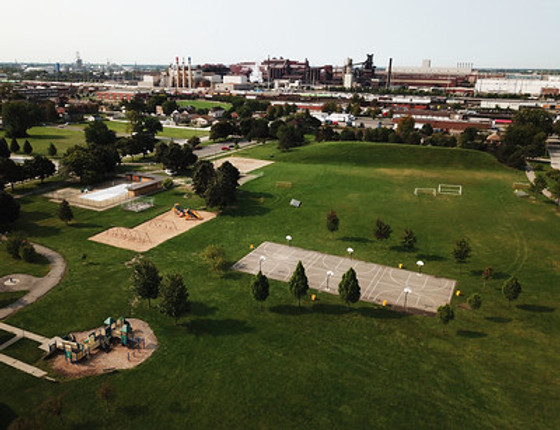Physicians, Researchers, Impacted Residents Call for Increased Protective Buffers from Oil and Gas Infrastructure

HARRISBURG, PA (October 30, 2023)– Today, a number of speakers from environmental and public health organizations, as well as academia and industry gave testimony about House Bill 170 to members of the House Environmental Resources and Energy Committee and the public. In HB 170, a setback or buffer refers to the minimum required distance between various oil and gas industry infrastructure, like fracking wells, a specific use (shale gas well pad) and an existing structure, boundary, natural resource, or any other area that needs protection in the interest of health, safety, and the general welfare of the public. Five speakers called for increased protective buffers, or setbacks, from oil and gas infrastructure. The two industry-related speakers were not supportive of the current bill, but were open to further discussions about increased setback distances. Right now, oil and gas infrastructure is allowed within an easily waived 500 feet of homes, schools, and buildings, but testifiers supported House Bill 170 and recommended that operations be moved back to at least 2,500 feet between unconventional wells and buildings, as well as greater distances for schools, nursing homes, hospitals, and places that serve people with intellectual or developmental disabilities. Twenty Pennsylvania environmental and health organizations submitted a written comment supporting the bill. The Protective Buffers Coalition, comprised of some of those same organizations, have long called for even greater distances and setbacks and from additional gas-related infrastructure.
“There is broad support for increased setback distances between gas infrastructure and Pennsylvania residents,” said Lois Bower-Bjornson, Washington County Resident, Clean Air Council. “A 2021 poll conducted by Data for Progress showed that Pennsylvanians support increased setback distances between gas infrastructure and homes, schools, hospitals, childcare centers, and other residential buildings by a 60% margin. Since 2021, Clean Air Council and partners have assisted 4,392 Pennsylvania residents in expressing their support for increased setbacks to their local elected officials.”
Recent health studies found that people living in close proximity to oil and gas infrastructure are at risk for a host of health issues including cancer, respiratory disease, low birth weight, and cardiovascular disease. By creating larger setbacks, or buffers, Pennsylvanians will be protected from harmful pollutants like benzene, hydrogen sulfide, and carbon disulfide.
“It’s clear that a 500 foot buffer from homes, childcare centers, schools, businesses, hospitals, and nursing homes is way too small, said Ned Ketyer, MD, President of Pennsylvania Physicians for Social Responsibility. “Increasing the distance between the activity and where people (especially children) live, work, learn, and play is only one step, but an important one, to protect the health of Pennsylvanians from dangerous fracking emissions consisting of fine particulate matter (PM2.5), volatile organic compounds (VOCs like benzene, toluene, and formaldehyde), ozone-forming nitrogen oxides, heat-trapping methane, radon gas, and many other toxics.”
“We observed elevated odds of cancer associated with UOG (unconventional oil and gas) activity within 2 km (more than 6,560 ft), which far exceeds any existing setback distance,” said Cassandra Clark, PhD, Postdoctoral Fellow, Yale School of Public Health. “Further, although effect sizes diminished with increasing buffer size, the odds of developing ALL (acute lymphoblastic leukemia) were still elevated for children living within 5 and 10 km of UOGD. Our results in the context of the broader environmental and epidemiologic literature suggest that existing setback distances are insufficiently public health protective, particularly for vulnerable populations like children, and should be revisited and informed by more recent data.”
“The optical gas imaging footage Earthworks has captured shows air pollution from unconventional oil and gas development regularly goes beyond facility fencelines,” said Melissa Ostroff, MPH, Earthworks Pennsylvania Policy and Field Advocate. “While this pollution is not visible to the naked eye, our camera provides visual evidence that communities living in close proximity to well pads and other fracking infrastructure are breathing in pollution from the industry. Policymakers must take this reality into account by increasing setback distances for oil and gas facilities.”

